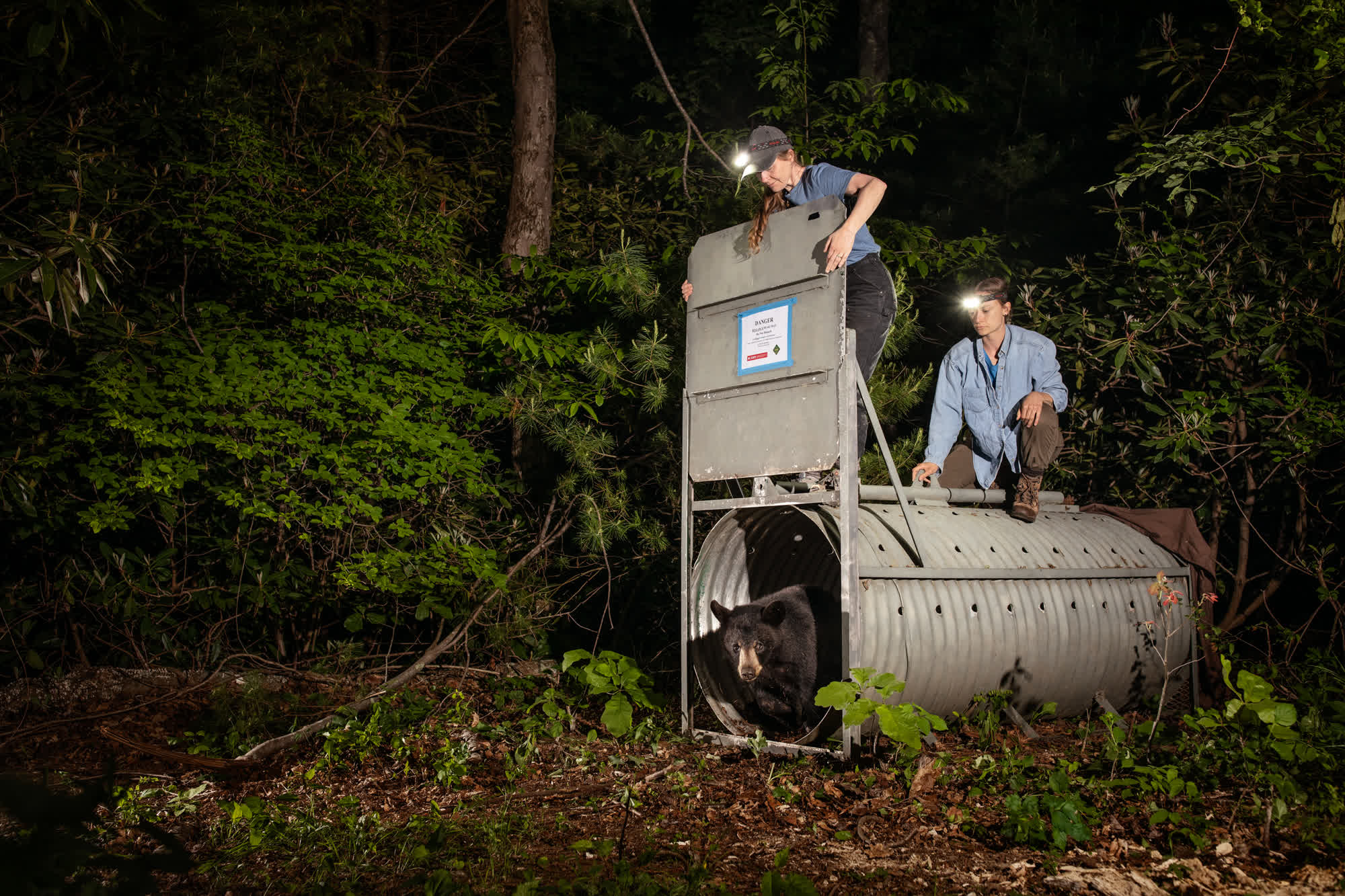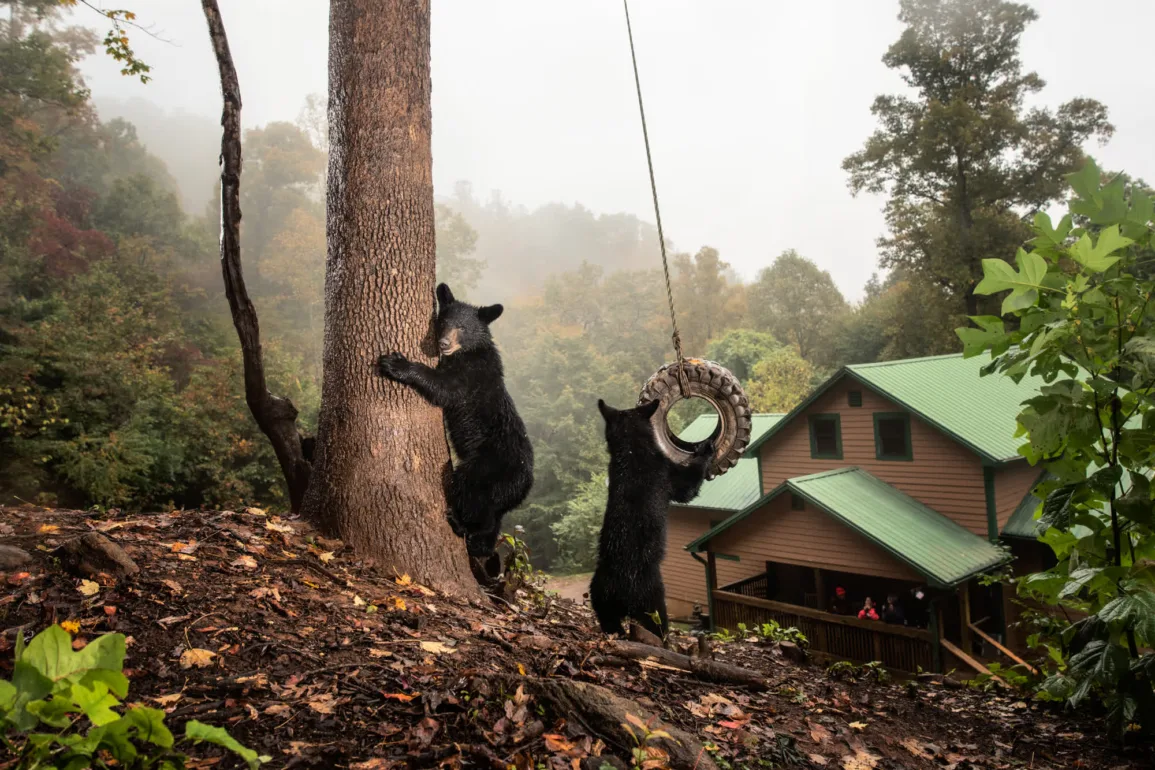A black bear emerges from his den in the crawl space of an abandoned house in South Lake Tahoe, California.
Editor’s note: Call to Earth is a CNN editorial series committed to reporting on the environmental challenges facing our planet, together with the solutions. Rolex’s Perpetual Planet initiative”>Rolex’s Perpetual Planet initiative has partnered with CNN to drive awareness and education around key sustainability issues and to inspire positive action.
A giant black bear squeezes out of a gap under an abandoned house in South Lake Tahoe, California. Its coat shimmers in the flash of the camera, a color somewhere between that of the dry pines that line the ground and the flaking rust-red paint of the house behind.
Photographer Corey Arnold had been told that a bear was denning there and set up his camera, equipped with motion sensors, waiting for it to emerge. What he did not know was quite how enormous the bear would be. A series of images showed how it slowly but surely shimmied its bulky paunch out of the hole, off to scavenge for its dinner. Later that night, the camera captured it returning and stuffing itself back into its home.
The bear’s size is down to its diet of human garbage, says Arnold. In parts of the US, where black bears are living in and around cities, both their behavior and shape have changed. According to studies in both Lake Tahoe and Asheville, North Carolina, urban bears are less active than those in the wilderness and live off a diet of sugary human food. As a result, they are sometimes double the weight.
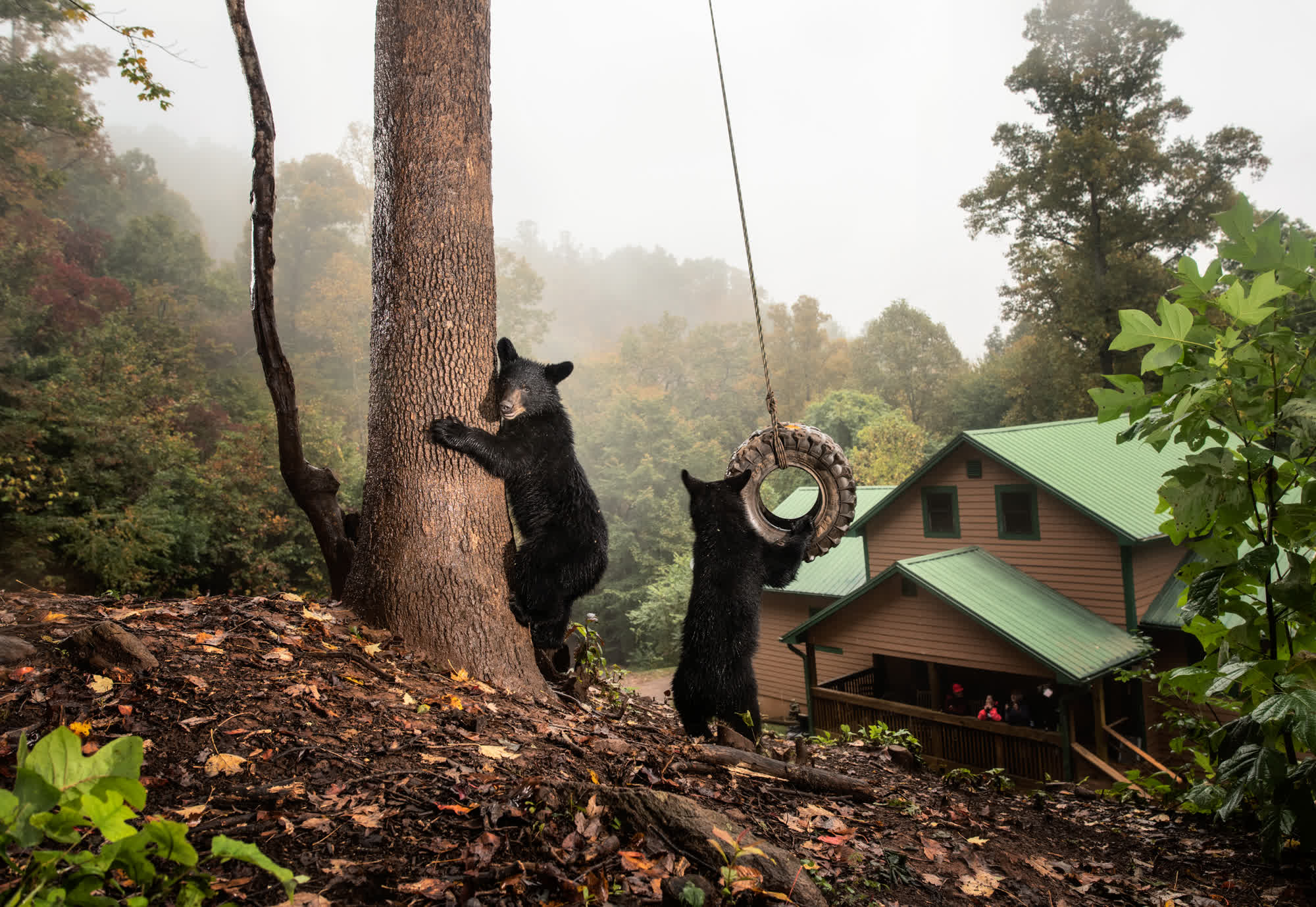
For better or for worse, wild animals are having to adapt to survive in areas of increased urbanization, and it’s these animals that were the stars of Arnold’s “Cities Gone Wild” series. Initially commissioned by National Geographic and published last year alongside an article by journalist Christine Dell’Amore, the project was recognized in the 2023 Sony World Photography Awards, winning first place in the wildlife and nature category.
Black bears, coyotes and raccoons were its focus — species whose populations tend to be growing in urban areas, says Arnold. “They’re the ones that have learned to adapt really well in human-built landscapes, like cities and suburbs,” he tells CNN.
For three months in the field, he tracked the animals in various cities across the US as they went about their daily life — capturing where they slept, how they found food, and their relationship with humans. The results were enlightening: raccoons nesting in the narrow gaps between buildings, bears emerging from dumpsters and cubs playing on tire swings.
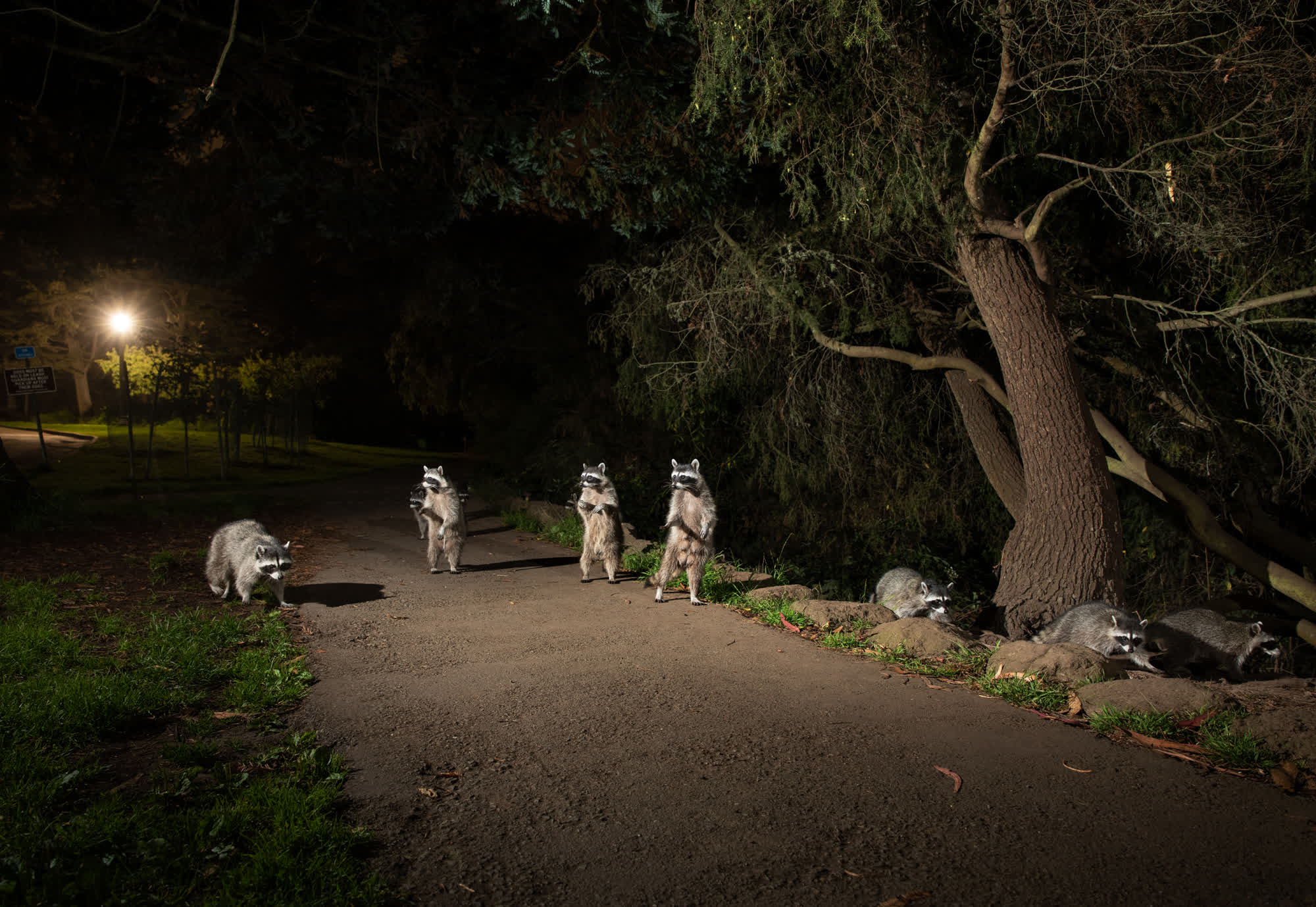




A raccoon rifles through a recycling bin in San Francisco.

A volunteer helps to track and evict bears on people’s properties.
In Chicago, working alongside scientists, Arnold followed radio-collared coyotes. He was astounded by the ways in which they had learned to navigate the urban sprawl and avoid vehicle traffic (their number one killer) through an extensive network of railroad tracks. “They would wake up in an empty lot somewhere, run down the railroad tracks, take a pit stop and search for rabbits or mice in one lot, and then get back on the tracks and cruise down,” he says.
Despite the density of the city, they still had specific territories, knew where to find a mate and were smart at finding hiding places that humans didn’t have access to. “Most of the time, when we were tracking the radio-collared ones, you could barely see them. I knew exactly where they were, but somehow, they were just navigating through the shadows using stealth to exist out there,” he adds.
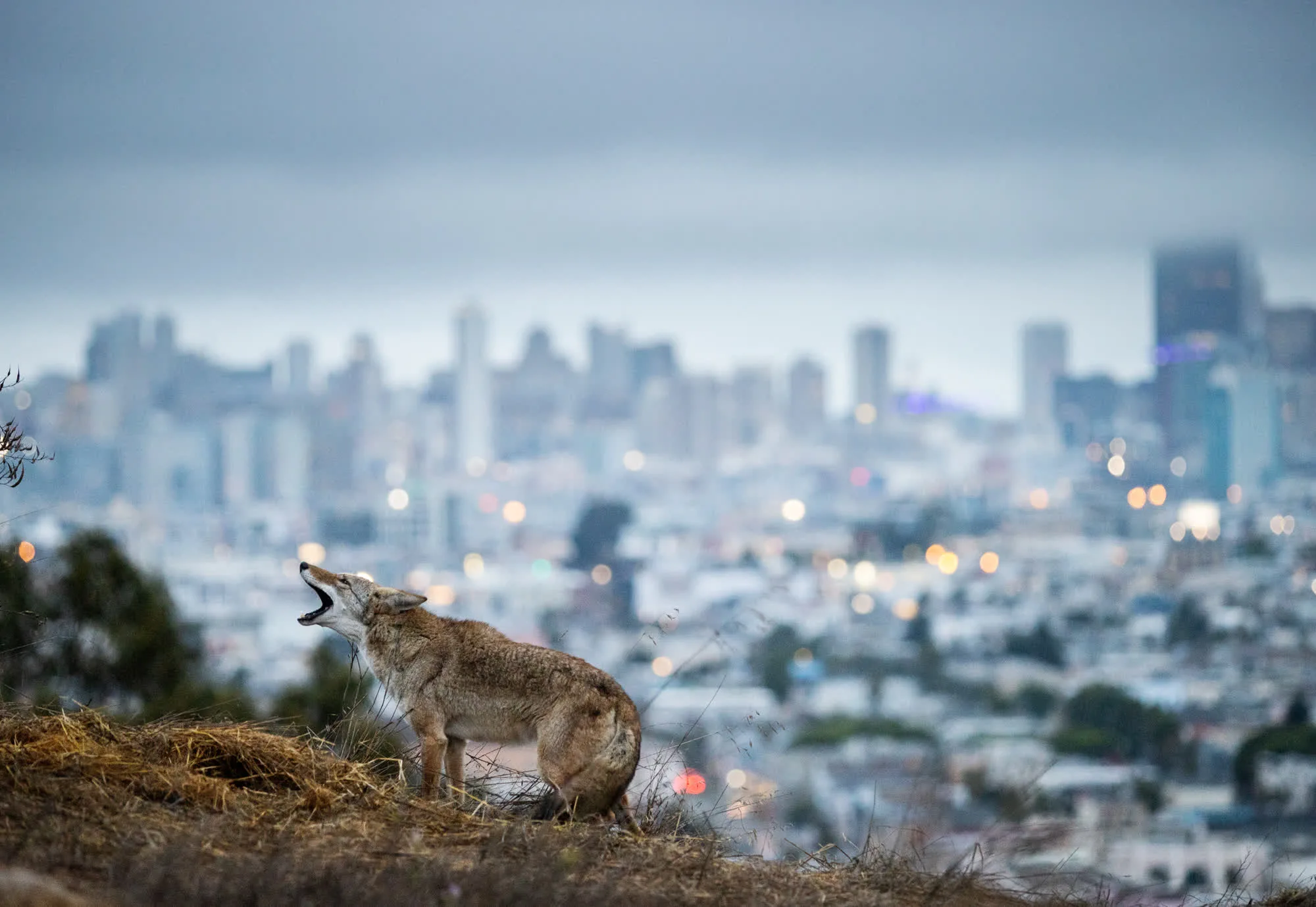



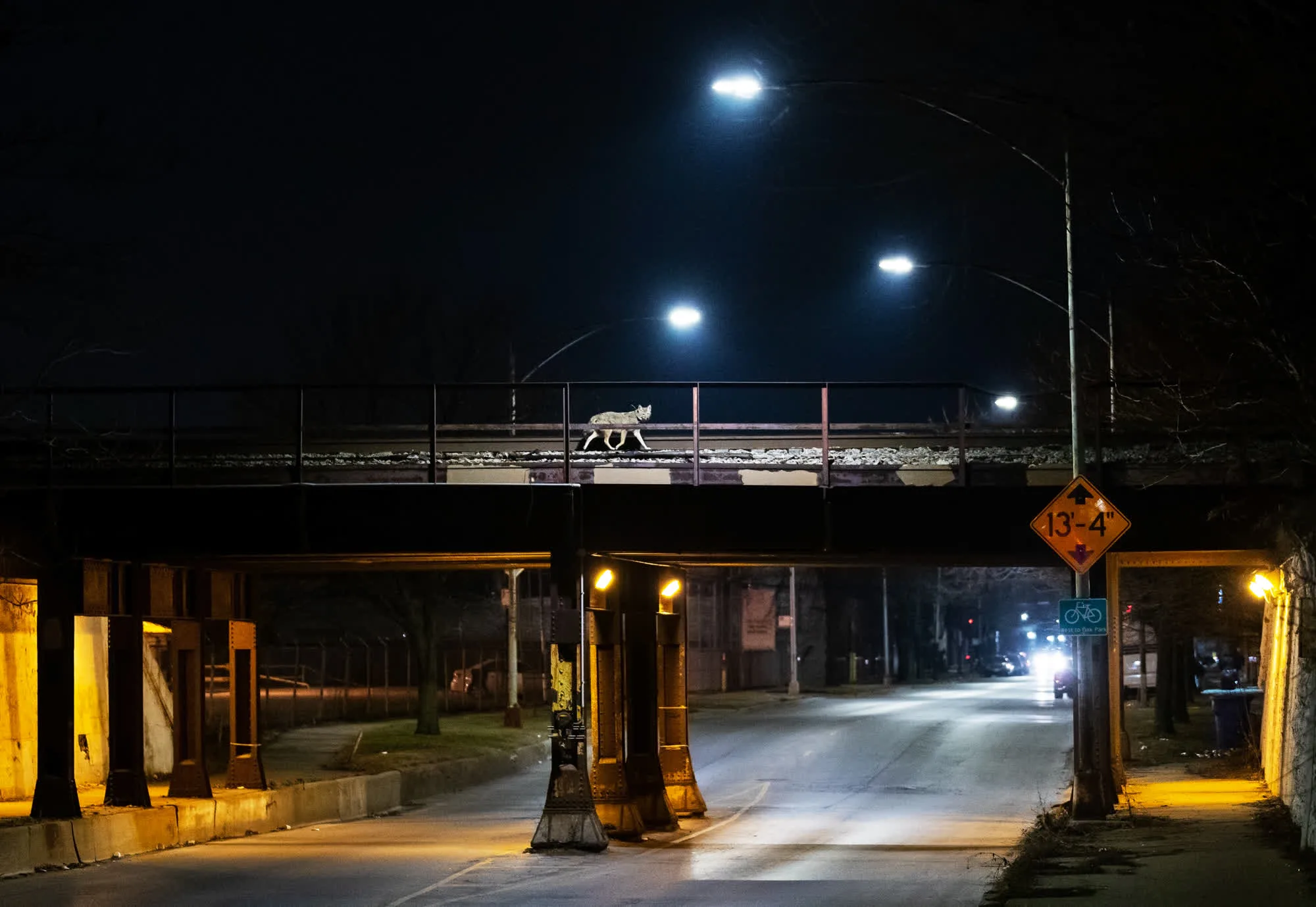



However, these animals do not always stay out of humans’ way. Often, they cause havoc: rummaging through trash cans and leaving garbage strewn across the street, nesting in people’s basements or attics and causing a stench, and at times even attacking people — or their pets.
One of Arnold’s photographs features not a wild animal, but a small dog named Misto on the front lawn of a house in San Francisco. It’s wearing what looks like a punk-rocker accessory but is in fact a spiky coyote deterrent. The owner bought it following accounts of coyotes snatching small dogs off the street in the city.
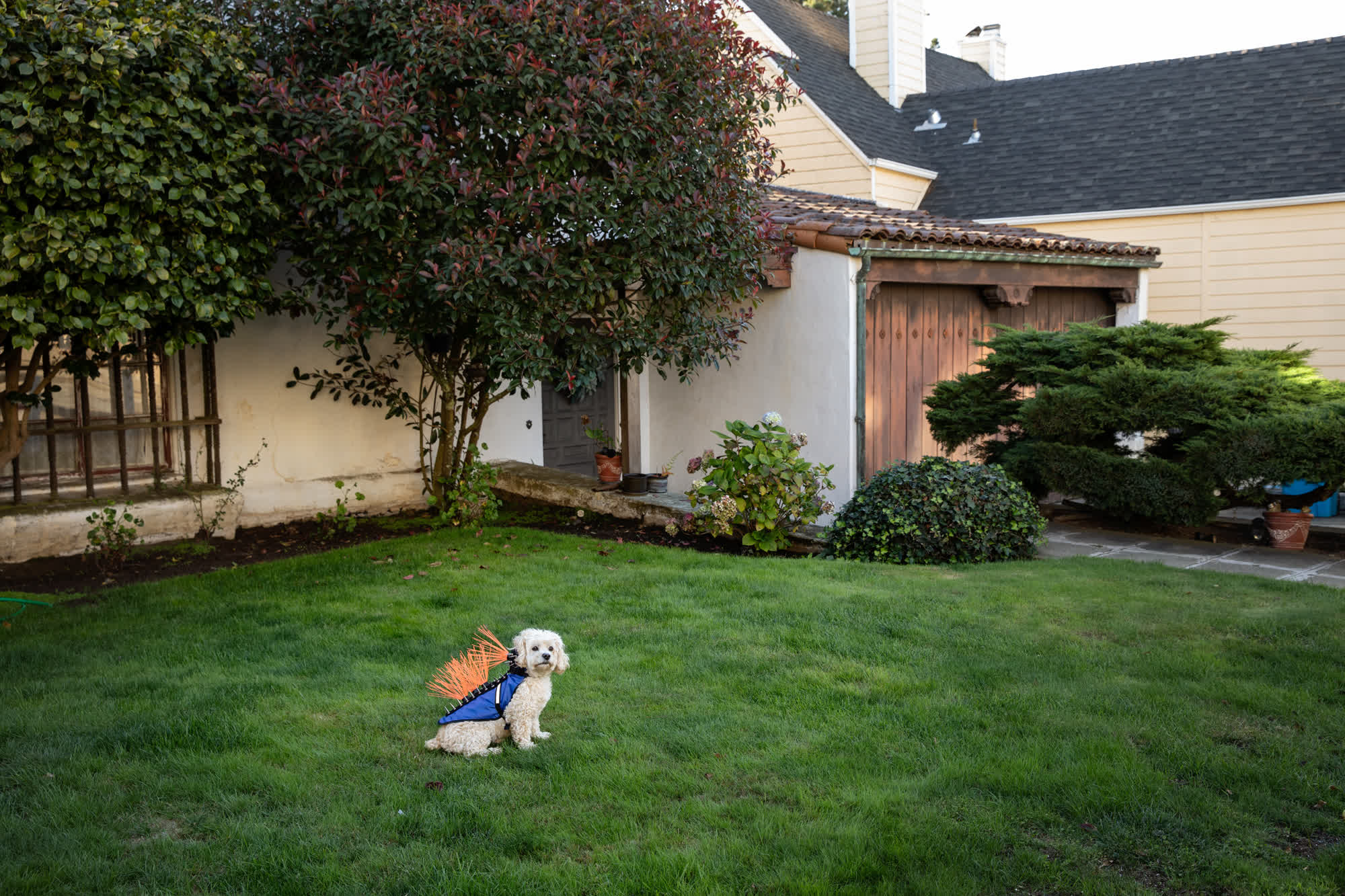



In Asheville, some residents hunt black bears during certain times of the year, luring them in with bait and even eating the meat after. Others put birdseed out in their backyard to feed them. Arnold recounts how one woman would leave a giant water bowl outside her property, so that bears would trail through her garden. Year after year, the same bear would come by with a new litter of babies and she would interact with them through her window, he says.
The complex relationship between humans and animals has always fascinated Arnold. As a young boy growing up on an avocado farm in southern California, he would find stray animals, bring them home and nurse them back to health, but he would also go fishing on the weekends with his dad, where they would toss away the “trash fish” without a second thought.
“As I grew a little older, I started to really think about what a strange relationship we have (with animals): we admire them, we love them, we also eat them. Why do we not eat our pets, but we do eat other animals? Why do we shoot some animals because they’re eating our food and other ones, we feed them treats in our backyard and love watching them?” he says.
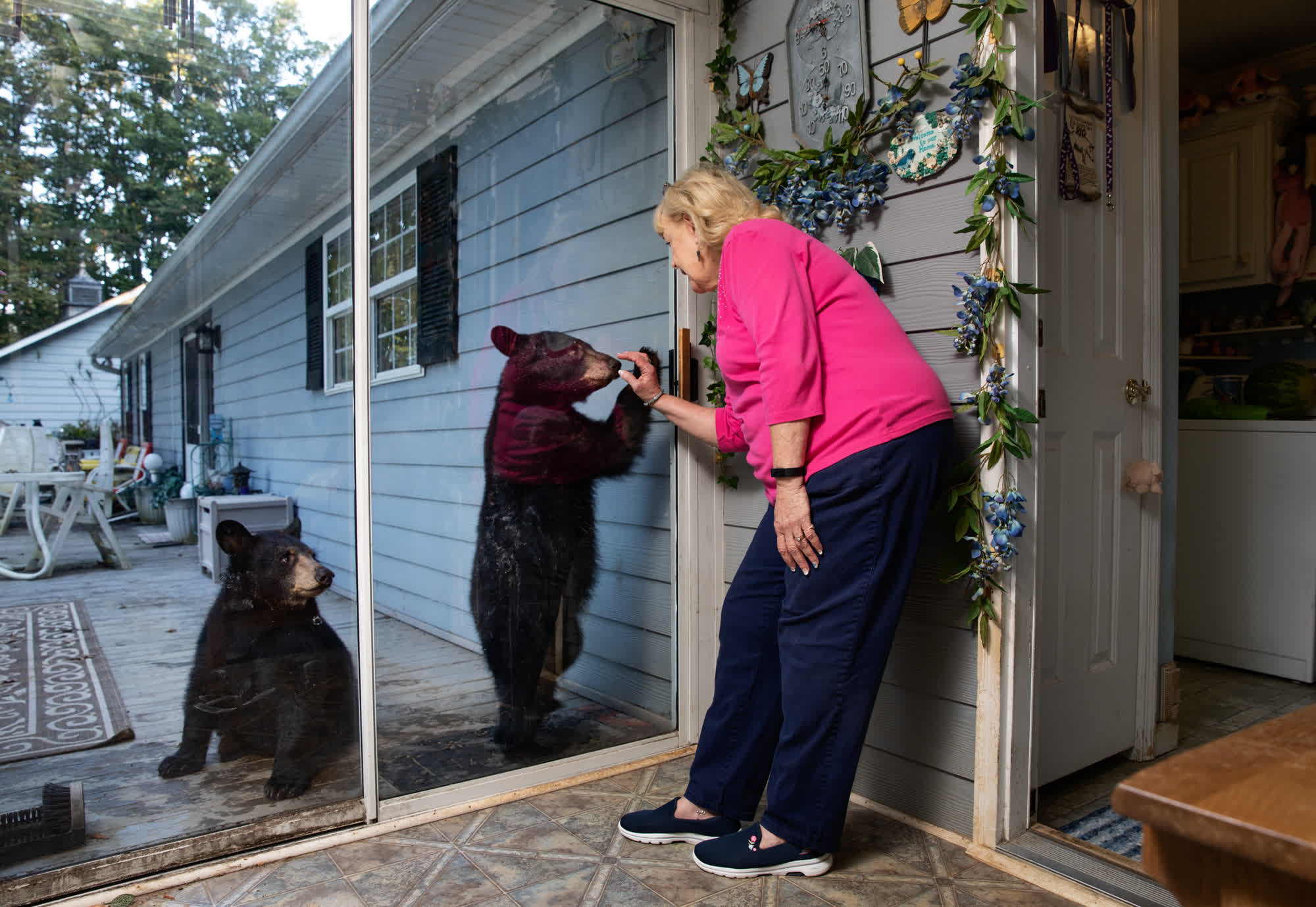



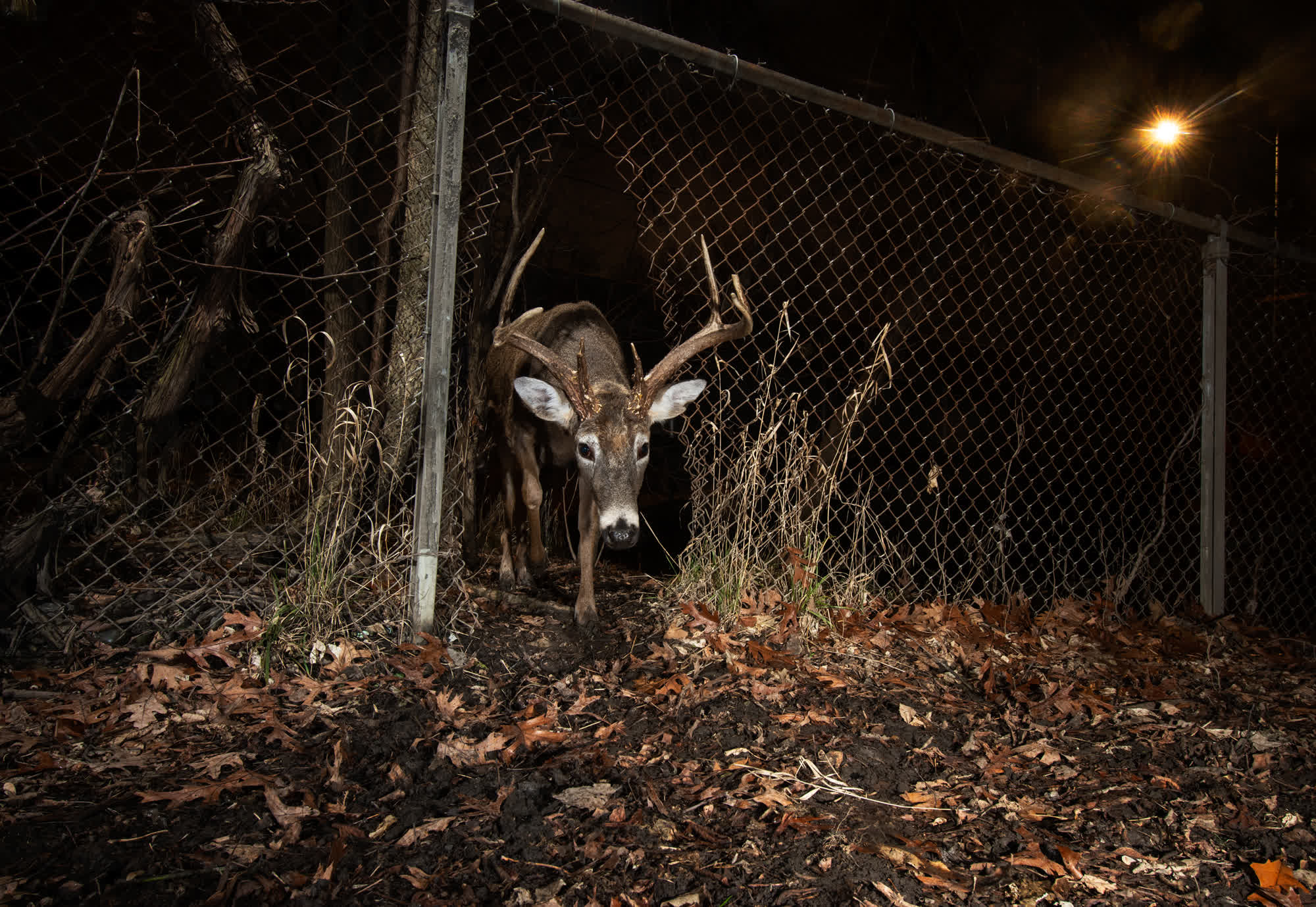



This curiosity has shaped a lot of his photographic work, from documenting commercial fishing and life at sea to a growing collection of images showing an array of human-wildlife encounters, from someone bathing a guinea pig to a woman wearing a leopard-print fur coat.
As a photographer, Arnold believes it’s important not to judge the different relationships. “I’m someone who can step back and look at the big picture, whether it comes to hunting or protecting the environment,” he says. “I try to strike a balance and try to listen to everyone’s opinions on how we should treat our animals.”
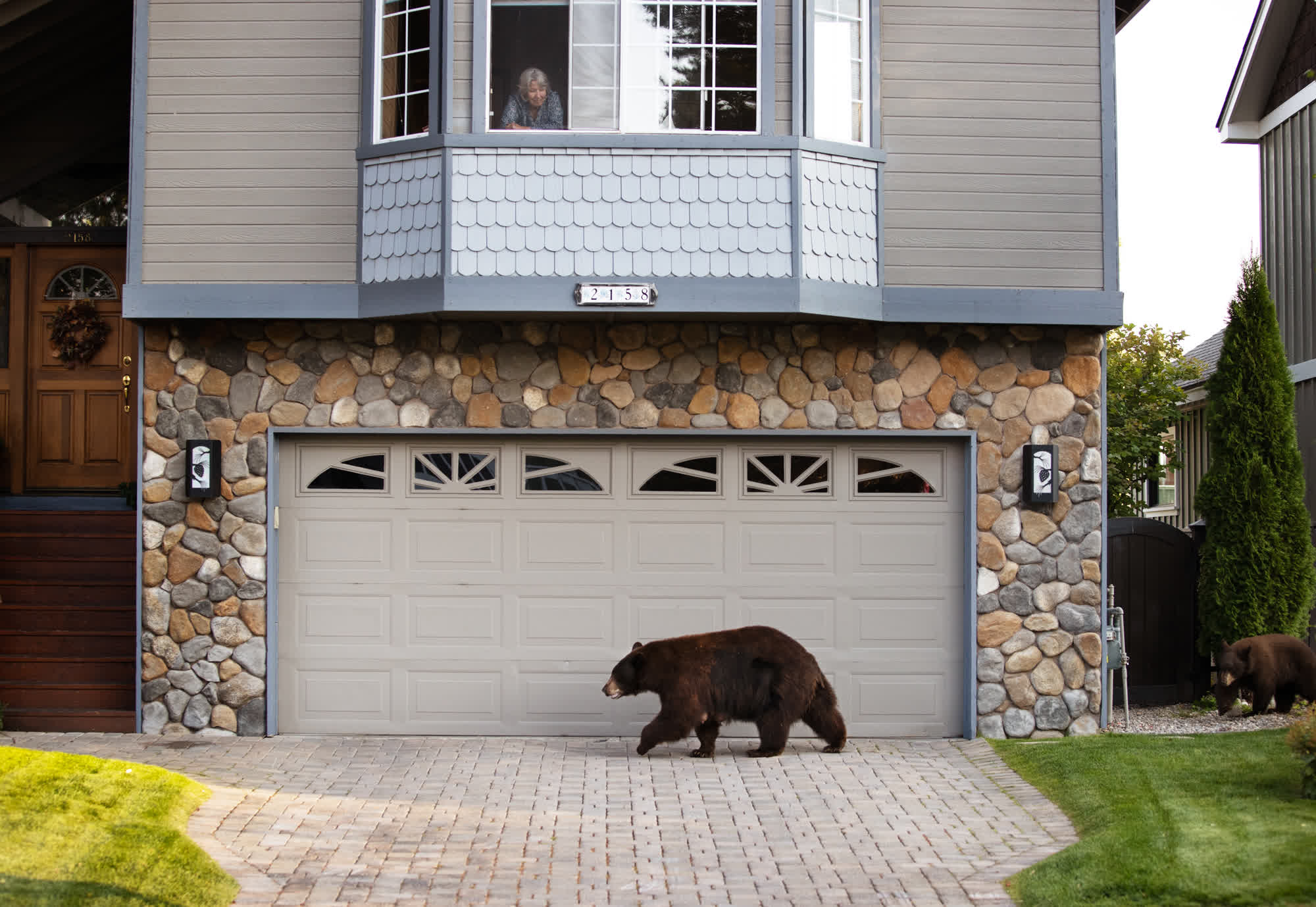



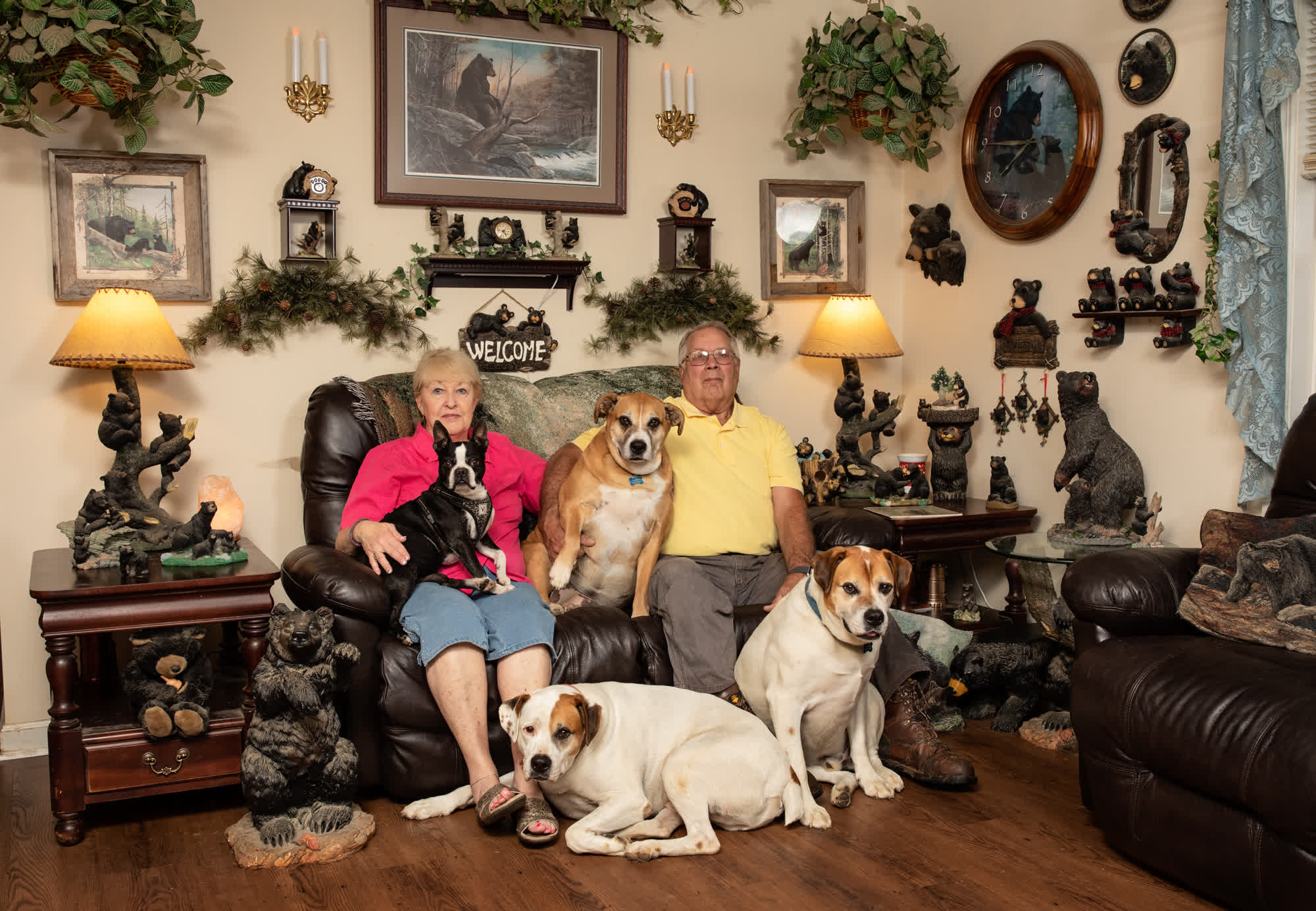



The “Cities Gone Wild” project illustrates the potential dangers as cities grow, native habitats are destroyed, and humans and animals live in closer proximity. It also shines a light on the life of these animals and hints that the more we understand them, the more likely we are to find ways get along with them.
“There’s always going to be a bit of conflict,” says Arnold. “We just have to strike a middle ground where we’re not exterminating them, but we’re just learning to live with them and keep our distance.”
